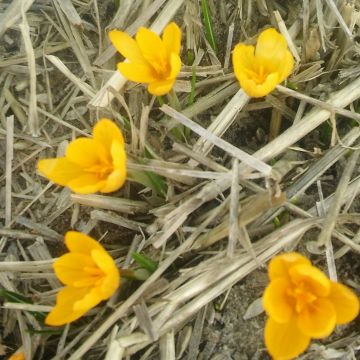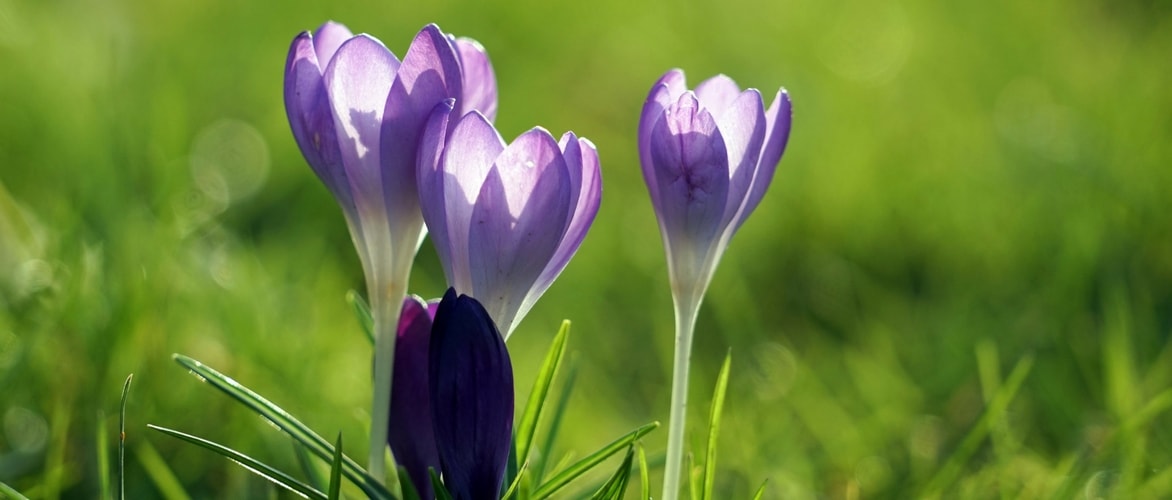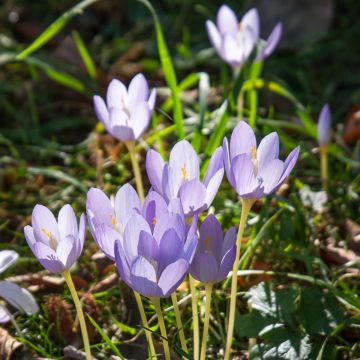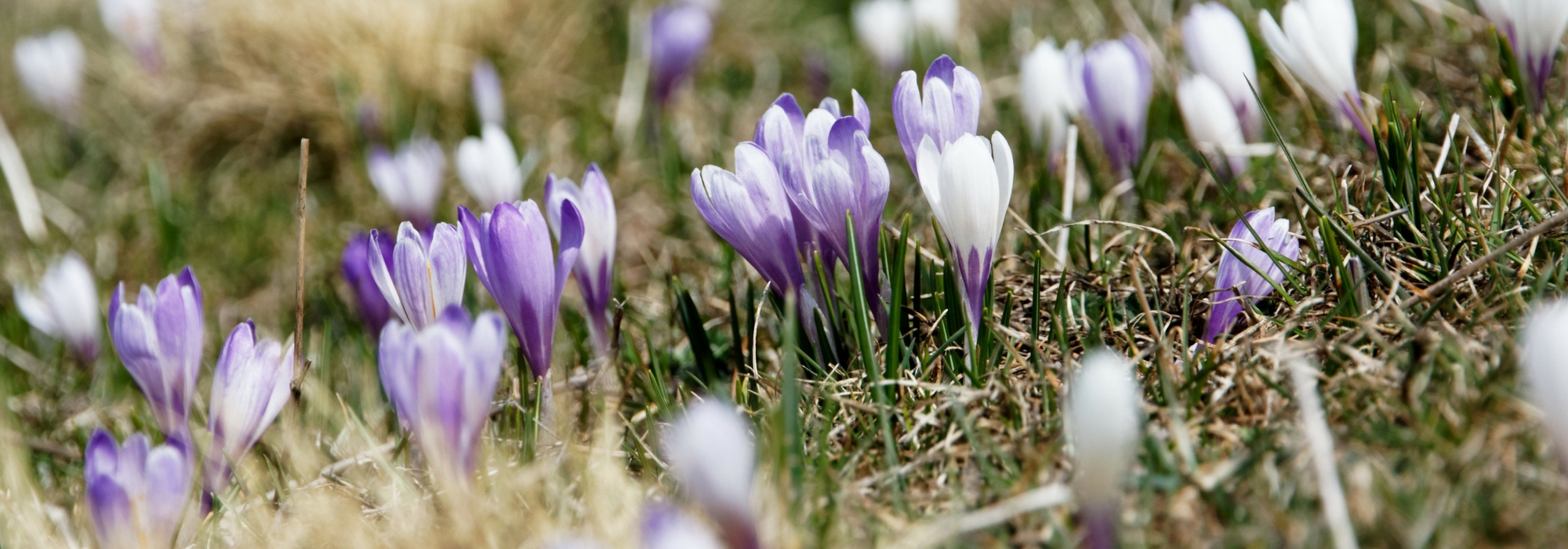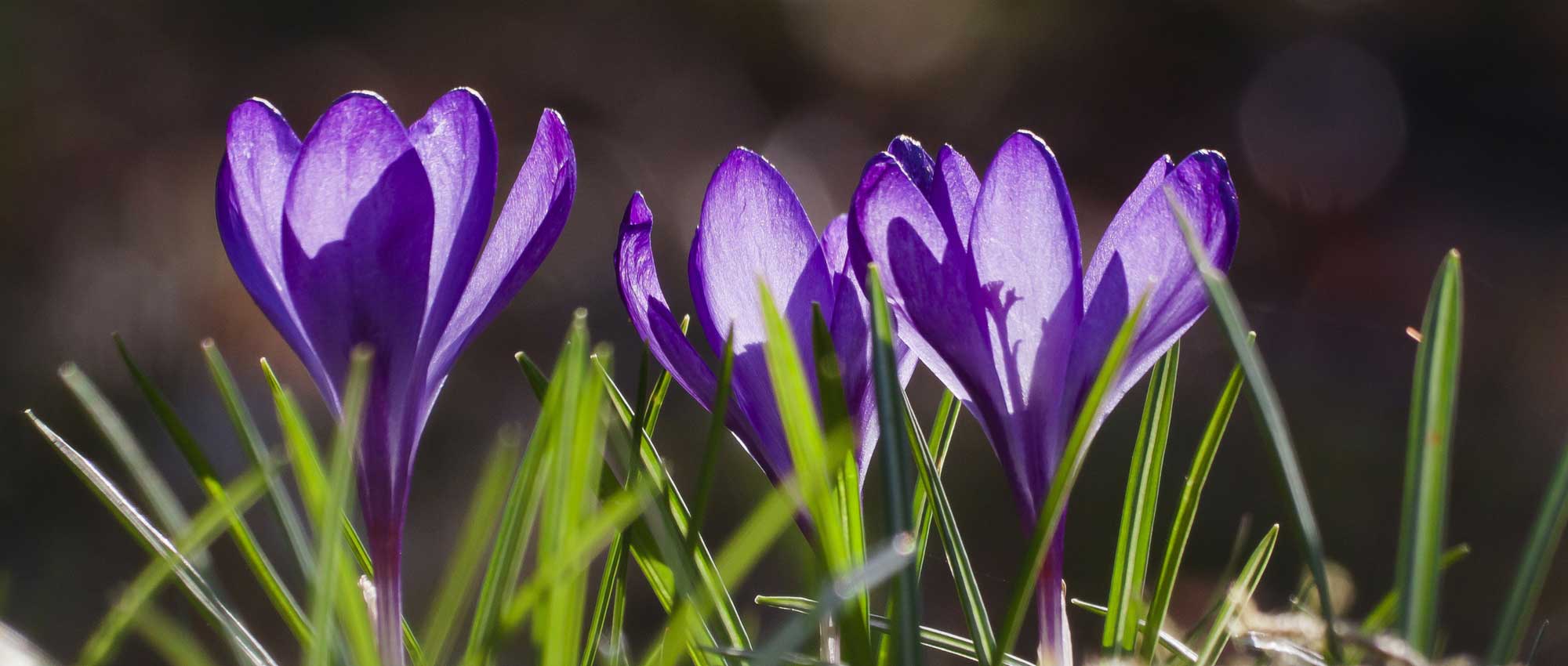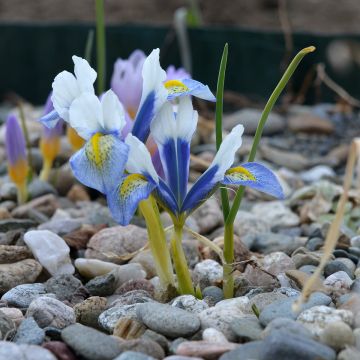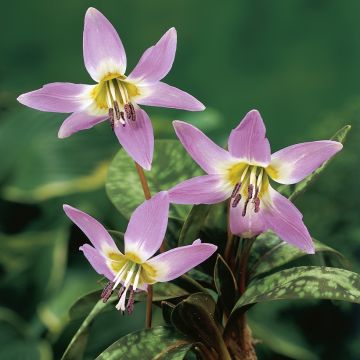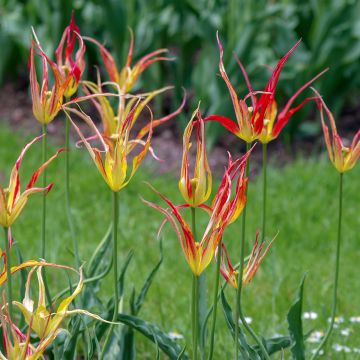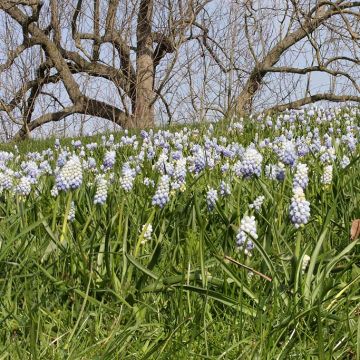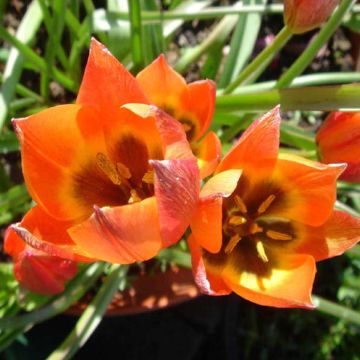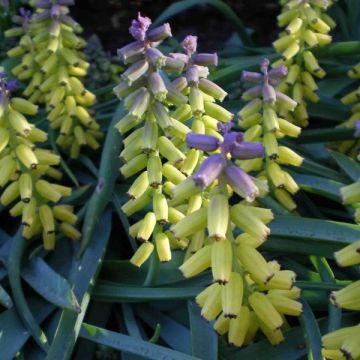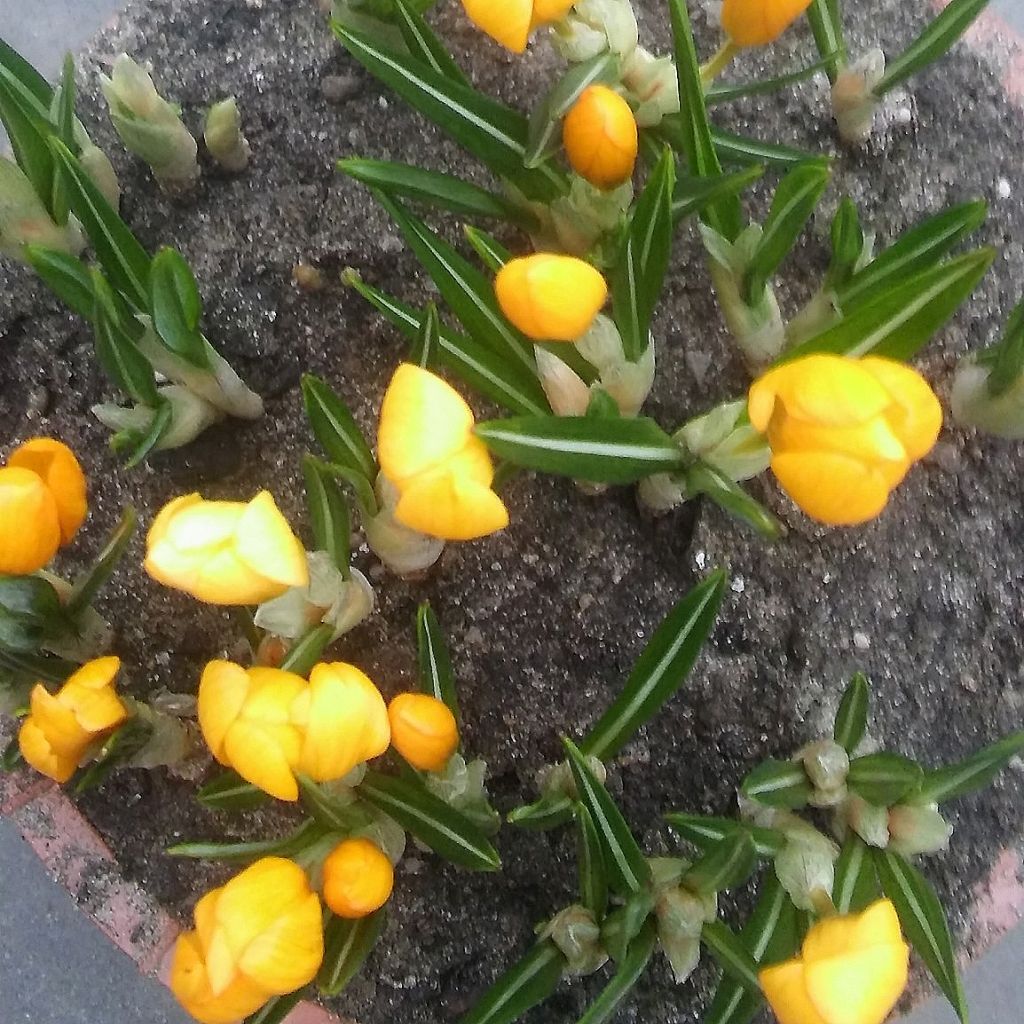

Crocus olivieri ssp olivieri
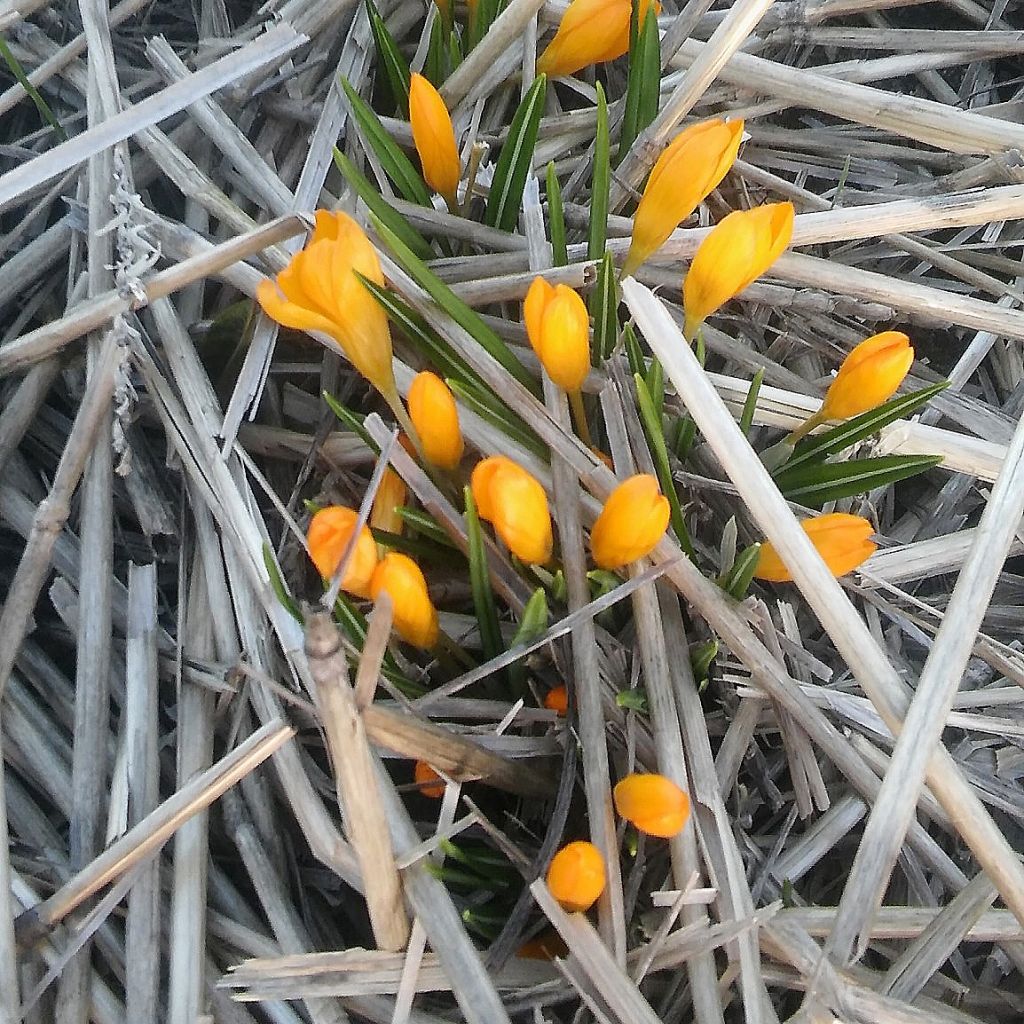

Crocus olivieri ssp olivieri
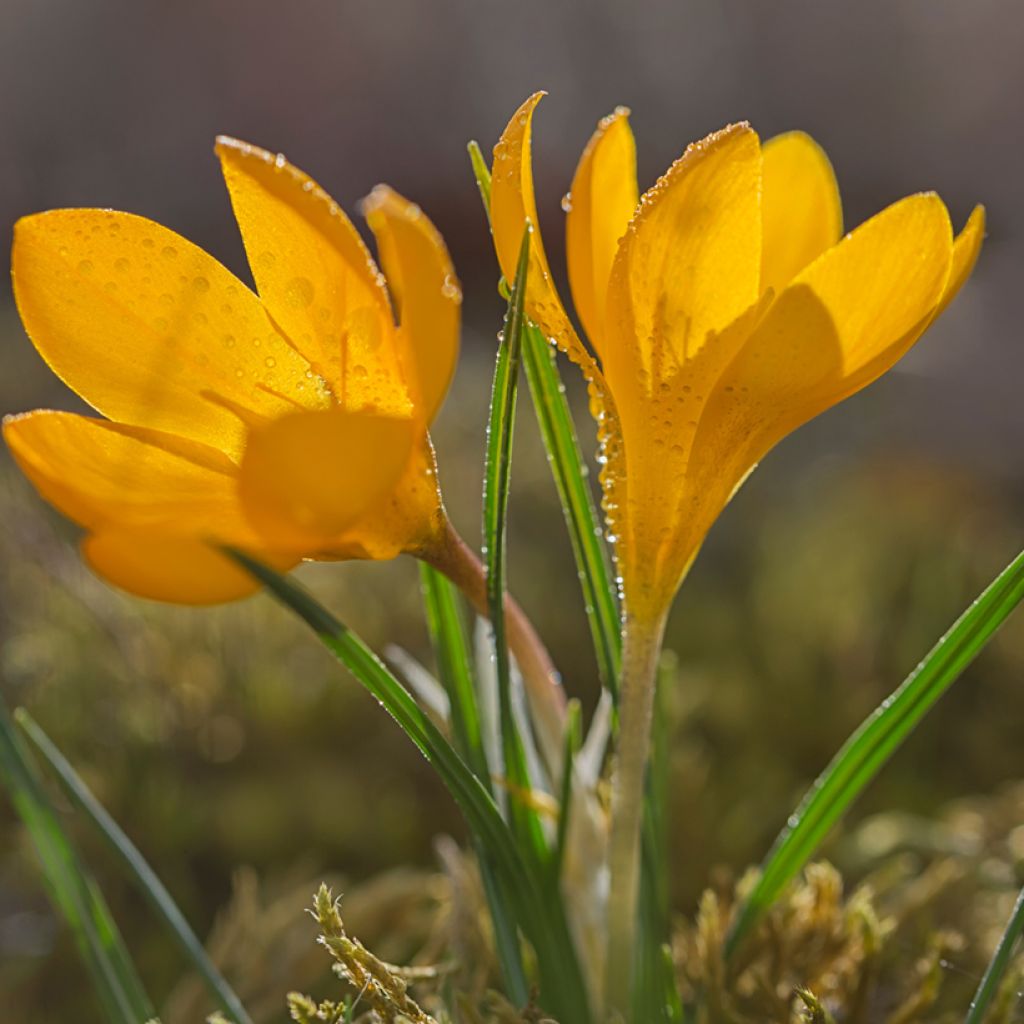

Crocus olivieri ssp olivieri
Crocus olivieri subsp. olivieri
Crocus olivieri subsp. olivieri
Special offer!
Receive a €20 voucher for any order over €90 (excluding delivery costs, credit notes, and plastic-free options)!
1- Add your favorite plants to your cart.
2- Once you have reached €90, confirm your order (you can even choose the delivery date!).
3- As soon as your order is shipped, you will receive an email containing your voucher code, valid for 3 months (90 days).
Your voucher is unique and can only be used once, for any order with a minimum value of €20, excluding delivery costs.
Can be combined with other current offers, non-divisible and non-refundable.
Why not try an alternative variety in stock?
View all →This plant carries a 6 months recovery warranty
More information
We guarantee the quality of our plants for a full growing cycle, and will replace at our expense any plant that fails to recover under normal climatic and planting conditions.
Would this plant suit my garden?
Set up your Plantfit profile →
Description
Crocus olivieri subsp. olivieri is very close to another botanical species called C. olivieri subsp. balansae, which is distinguished by a solid yellow-orange colouration both inside and outside the flower. This subspecies is also characterised by the division into 6 branches of the style located in the centre of the flower. It is a small, robust and hardy bulbous plant, with flowers emerging in late winter, sometimes piercing the last snow. Plant the bulbs where you can enjoy their radiant flowering, near the house or even in a planter.
Crocus olivieri subsp. olivieri belongs to the Iridaceae family. It is found in the Balkans and Turkey (Albania, Greece, Macedonia, Romania, Bulgaria), where it grows in woods and thickets. The plant eventually forms large colonies of upright tufts reaching a height of 12cm (5in). Flowering takes place from February to March-April, depending on the climate. The flowers are cup-shaped and open in a star shape. The corolla is a very bright orange-yellow, as is the throat occupied by stamens and a style divided into 6 branches. They close at night and in bad weather, but open widely in the sun and even in partial shade. The foliage is deciduous in summer, composed of very thin linear leaves, which are single and alternate. They are shiny dark green with a white-silver central stripe. The 'bulbs' here are corms, covered by a membranous tunic, with thick and parallel fibres dividing at the base. A corm is, in plant morphology, an underground storage organ resembling a bulb, but formed by a swollen stem surrounded by scales.
Crocuses are undisputed stars of the garden, as they are the first heralds of spring. Crocus olivieri subsp. olivieri works wonders in rockeries, gravel beds, and along pathways. It will also thrive at the base of a hedge, planted en masse at the foot of deciduous trees (lilacs, mock oranges, viburnums) with Anemone blanda, Cyclamen coum, a carpet of violets, and of course, with other early-flowering crocuses. This crocus is well-suited for outdoor pot planting. Remember that early-flowering crocuses dislike waterlogged soils in winter and overly damp soils in summer. Always plant them in perfectly well-drained soil that is very dry in summer.
Crocus roots can contract like a spring, allowing the plant to settle at its ideal depth.
Crocus olivieri subsp. olivieri in pictures
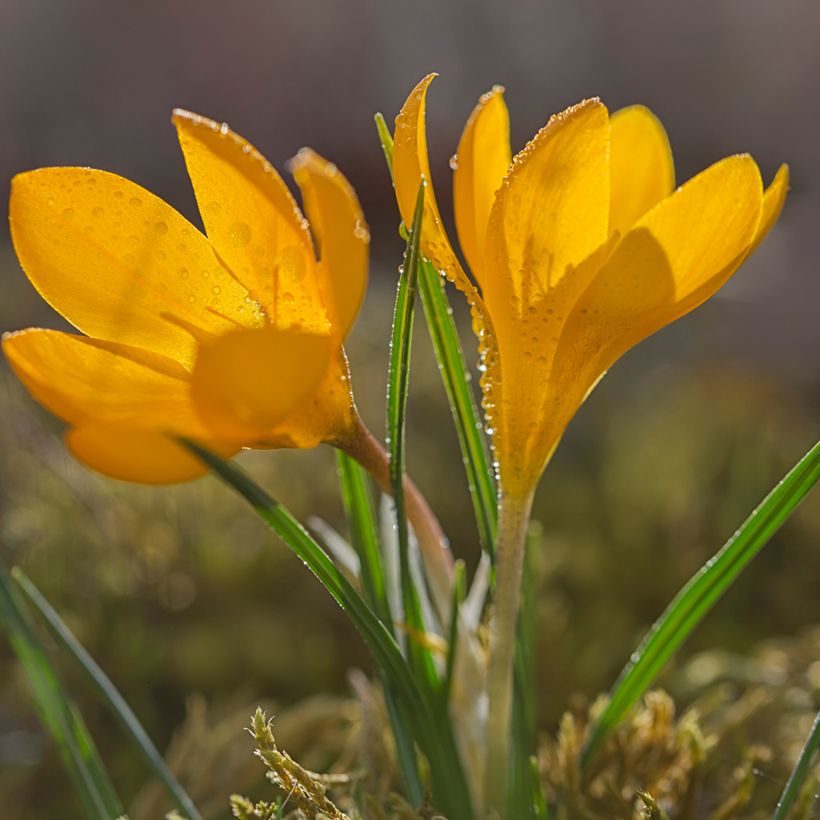

Plant habit
Flowering
Foliage
Botanical data
Crocus
olivieri subsp. olivieri
Iridaceae
Southern Europe
Other Spring Crocus
View all →Planting and care
Plant young bulbs from September to December in light, even chalky, soil that is preferably dry in summer. Bury them 5cm (2in) deep and 5cm (2in) apart, or in groups of three every 15 to 20cm (6 to 8in). If necessary, incorporate coarse sand into the planting soil. It is preferable to leave them in place. They will form increasingly floriferous clumps. They work well in pots on a patio.
Planting period
Intended location
Care
Planting & care advice
This item has not been reviewed yet - be the first to leave a review about it.
Similar products
Haven't found what you were looking for?
Hardiness is the lowest winter temperature a plant can endure without suffering serious damage or even dying. However, hardiness is affected by location (a sheltered area, such as a patio), protection (winter cover) and soil type (hardiness is improved by well-drained soil).

Photo Sharing Terms & Conditions
In order to encourage gardeners to interact and share their experiences, Promesse de fleurs offers various media enabling content to be uploaded onto its Site - in particular via the ‘Photo sharing’ module.
The User agrees to refrain from:
- Posting any content that is illegal, prejudicial, insulting, racist, inciteful to hatred, revisionist, contrary to public decency, that infringes on privacy or on the privacy rights of third parties, in particular the publicity rights of persons and goods, intellectual property rights, or the right to privacy.
- Submitting content on behalf of a third party;
- Impersonate the identity of a third party and/or publish any personal information about a third party;
In general, the User undertakes to refrain from any unethical behaviour.
All Content (in particular text, comments, files, images, photos, videos, creative works, etc.), which may be subject to property or intellectual property rights, image or other private rights, shall remain the property of the User, subject to the limited rights granted by the terms of the licence granted by Promesse de fleurs as stated below. Users are at liberty to publish or not to publish such Content on the Site, notably via the ‘Photo Sharing’ facility, and accept that this Content shall be made public and freely accessible, notably on the Internet.
Users further acknowledge, undertake to have ,and guarantee that they hold all necessary rights and permissions to publish such material on the Site, in particular with regard to the legislation in force pertaining to any privacy, property, intellectual property, image, or contractual rights, or rights of any other nature. By publishing such Content on the Site, Users acknowledge accepting full liability as publishers of the Content within the meaning of the law, and grant Promesse de fleurs, free of charge, an inclusive, worldwide licence for the said Content for the entire duration of its publication, including all reproduction, representation, up/downloading, displaying, performing, transmission, and storage rights.
Users also grant permission for their name to be linked to the Content and accept that this link may not always be made available.
By engaging in posting material, Users consent to their Content becoming automatically accessible on the Internet, in particular on other sites and/or blogs and/or web pages of the Promesse de fleurs site, including in particular social pages and the Promesse de fleurs catalogue.
Users may secure the removal of entrusted content free of charge by issuing a simple request via our contact form.
The flowering period indicated on our website applies to countries and regions located in USDA zone 8 (France, the United Kingdom, Ireland, the Netherlands, etc.)
It will vary according to where you live:
- In zones 9 to 10 (Italy, Spain, Greece, etc.), flowering will occur about 2 to 4 weeks earlier.
- In zones 6 to 7 (Germany, Poland, Slovenia, and lower mountainous regions), flowering will be delayed by 2 to 3 weeks.
- In zone 5 (Central Europe, Scandinavia), blooming will be delayed by 3 to 5 weeks.
In temperate climates, pruning of spring-flowering shrubs (forsythia, spireas, etc.) should be done just after flowering.
Pruning of summer-flowering shrubs (Indian Lilac, Perovskia, etc.) can be done in winter or spring.
In cold regions as well as with frost-sensitive plants, avoid pruning too early when severe frosts may still occur.
The planting period indicated on our website applies to countries and regions located in USDA zone 8 (France, United Kingdom, Ireland, Netherlands).
It will vary according to where you live:
- In Mediterranean zones (Marseille, Madrid, Milan, etc.), autumn and winter are the best planting periods.
- In continental zones (Strasbourg, Munich, Vienna, etc.), delay planting by 2 to 3 weeks in spring and bring it forward by 2 to 4 weeks in autumn.
- In mountainous regions (the Alps, Pyrenees, Carpathians, etc.), it is best to plant in late spring (May-June) or late summer (August-September).
The harvesting period indicated on our website applies to countries and regions in USDA zone 8 (France, England, Ireland, the Netherlands).
In colder areas (Scandinavia, Poland, Austria...) fruit and vegetable harvests are likely to be delayed by 3-4 weeks.
In warmer areas (Italy, Spain, Greece, etc.), harvesting will probably take place earlier, depending on weather conditions.
The sowing periods indicated on our website apply to countries and regions within USDA Zone 8 (France, UK, Ireland, Netherlands).
In colder areas (Scandinavia, Poland, Austria...), delay any outdoor sowing by 3-4 weeks, or sow under glass.
In warmer climes (Italy, Spain, Greece, etc.), bring outdoor sowing forward by a few weeks.






























